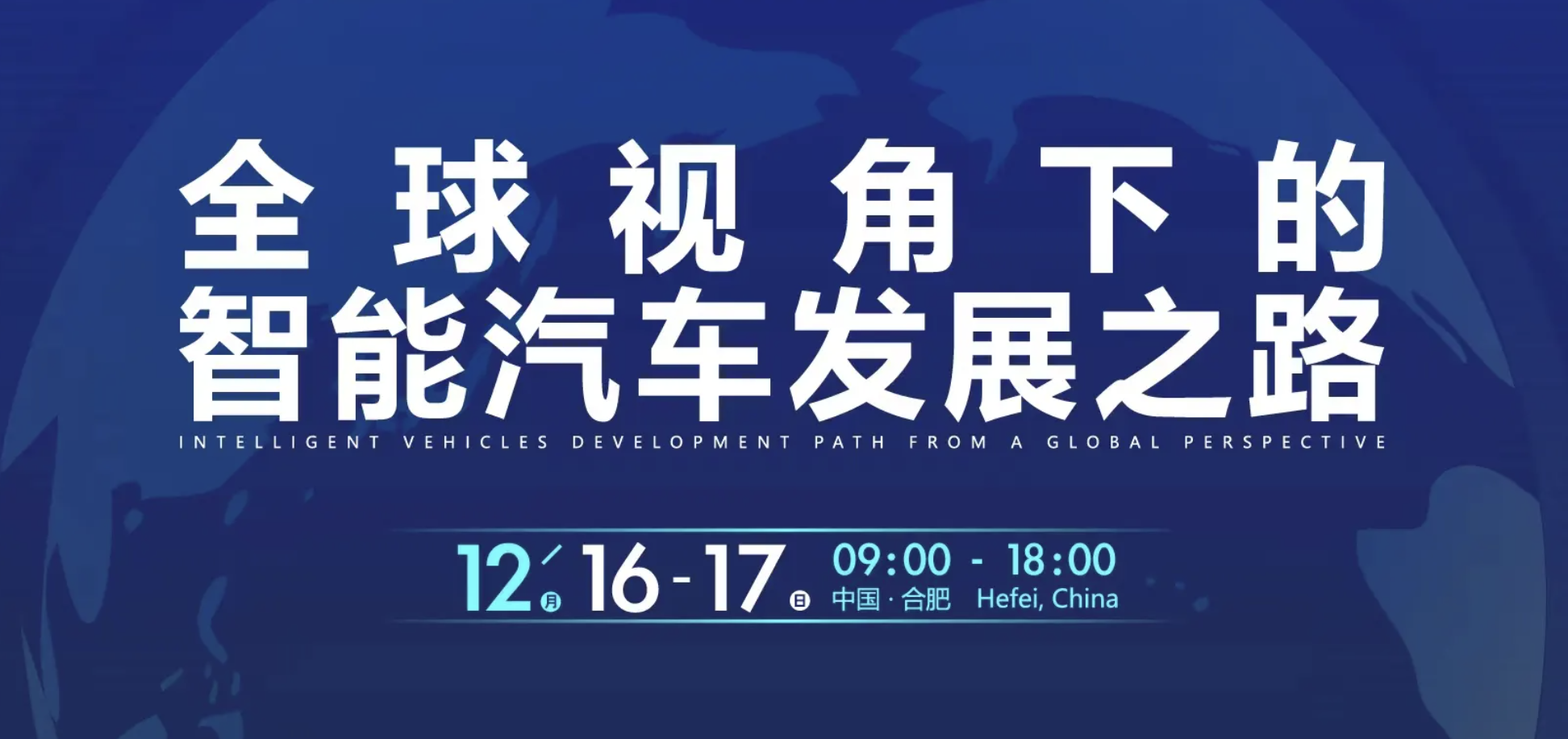From December 16 to 17, the Global Intelligent Vehicle Industry Summit (GIV2022) was officially launched in Hefei, Anhui Province.
The summit, with the theme of “the development path of intelligent vehicles in a global perspective,” held five open forums and two closed-door meetings, inviting hundreds of representatives from government departments, industry organizations, universities and research institutions, and leading companies in fields such as automobile, information, transportation, energy, and urban development, to jointly explore new paths for the development of intelligent vehicles in China.
I have summarized and organized some of the statements made by the experts at the summit.
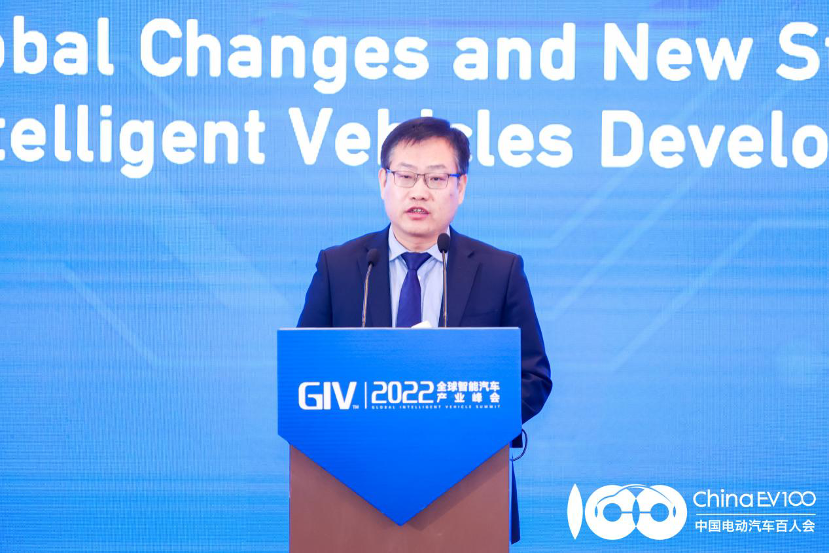
Li Ming, General Manager of Jiangling Motors Group Co., Ltd.:
-
It is estimated that in the L4 stage, we will surpass Europe and America. By 2025, the total number of intelligent vehicles in the Chinese market will lead the world.
-
We will gradually change from the way of exchanging resources for markets and exchanging markets for technology to exchanging technology for technology. At the same time, we encourage universities to conduct research in related fields, and collaborate with enterprises to carry out application research on the basis of technological research results, so as to promote the transformation and application of scientific and technological achievements.

Zhang Yongwei, Vice Chairman and Secretary General of the Chinese Electric Vehicle Hundred People Association:
-
The three-year chip shortage has led to a reduction in global automobile production by about 15 million vehicles, with more than 2 million in China. This is the profound impact of automotive chips on the industry.
-
In 2022, there will be 33 global wafer factories in operation, and according to current statistics, there will be 28 in 2023, one-third of which can provide capacity for automobiles. However, most of the newly added capacity is still in the climbing phase of construction, and there are still very few wafer plants specifically for automotive chips, so the bottleneck of capacity relief still exists.
-
In 2022, the penetration rate of automobile intelligence in our country has exceeded 30%. We believe that this proportion will reach 70% by 2030. Therefore, judging from the speed of intelligence, the demand for chips has shown an explosive growth trend. The number of chips per vehicle is 300-500, which will exceed 1,000 in the era of electric intelligence, and more than 3,000 for higher-level automatic driving. Therefore, we estimate that the scale of chips in our country will be about 30 billion US dollars in 2030, and the demand will be 100 to 120 billion chips per year. Therefore, the demand for automotive chips is increasing and the gap is getting bigger.- The high-end market for automotive chip design is dominated by the United States, South Korea, Japan, and the European Union. American companies control 96% of EDA’s IP, while Europe and the United States account for 95% of core automotive chip IP. Wafer factories’ wafers account for 2.5% of the overall value and are mainly located in Japan, the European Union, Taiwan, and other regions. Equipment and testing equipment account for approximately 16%, mainly in the United States, Europe, and Japan. The design process has the highest proportion, accounting for about 30%;
-
It is recommended that the entire industry chain should upgrade its technology, establish standards and a certification system, seize the production line, and support diversified business models.

Wang Lang, Vice President of Chery Holding Group Co., Ltd.:
- Chery’s main technology platforms currently include four aspects: Mars architecture, Kunpeng power, Xiongshi intelligence, and Galaxy ecology. Mars architecture mainly talks about our electronic architecture, from the latest generation of pre-control to gradually centralized control units. The breakthrough of the core three-electricity key technology in Kunpeng power also includes the new generation of hybrid technology. Xiongshi Intelligence is more about intelligent cockpits, automatic driving, highly automated driving ADAS, and data-related businesses. At the same time, the Galaxy ecology includes three aspects: technology ecology, supply chain ecology, and user ecology.
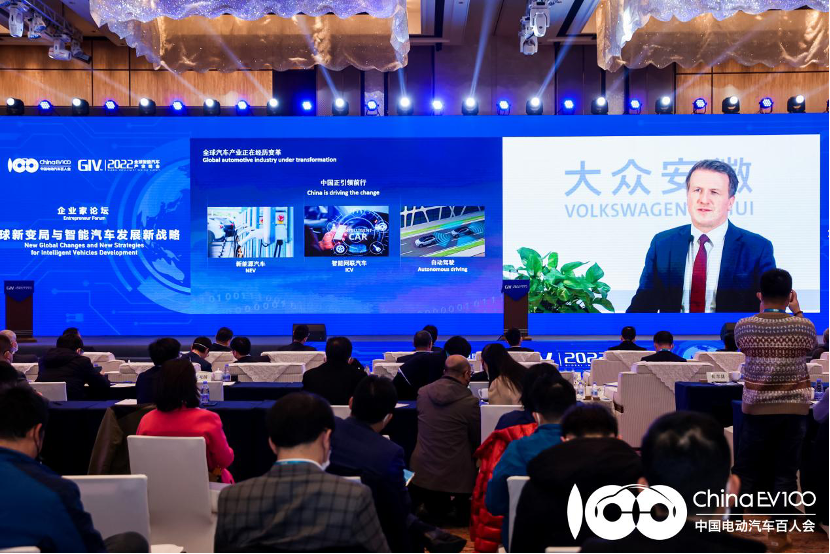
Ge Wandao, Chief Executive Officer of Volkswagen (Anhui) Co., Ltd.:
-
From January to November 2022, China produced a total of 6.25 million new energy vehicles, a year-on-year increase of 106.9%, and the market share of new energy vehicles reached 25%. China’s new energy vehicle sales have accounted for 59% of the total global sales;
-
Volkswagen Group (China) and its joint ventures will jointly invest approximately 15 billion euros between 2022 and 2024 to accelerate the layout of China’s electric travel field;
-
By the end of this year, we have more than 2,000 employees and plan to expand the total number of employees to 3,500, including 1,300 research and development engineers, by 2023.“`markdown

Xi Zhongmin, Vice President of GAC Aion New Energy Automobile Co., Ltd.:
-
Started hybrid in 2011, developed the first networked TBox in 2013, focused on pure electric routes in 2017, and now has developed five world-class products, entering a new stage of development;
-
Autonomous driving has achieved NDA system for urban areas and highways, and achieved NDA functions for long-distance remote call and parking. The first L4 Robotaix uses vehicle-level front-loading hardware. As you know, many Robotaixes are not vehicle-level front-loading hardware, but ours is,which has been put into operation for 500 days. The software development team for ICV is about 2,000 people, accounting for 50% of the R&D team;

Fan Xianjun, CEO of Yuan Cheng New Energy Commercial Vehicle Group:
-
From January to November 2022, commercial vehicle production and sales completed 2.927 million and 3.01 million respectively, a year-on-year decrease of 31.9% and 32.1%. The commercial vehicle industry still presents a state of low-level hovering;
-
The outbreak trend of new energy commercial vehicles is becoming more and more clear. According to statistics, the sales of new energy commercial vehicles from January to November this year were 253,000, with a penetration rate of 9.4%, and the penetration rate reached 18.8% in November alone;
-
With more than 2,000 R&D engineers worldwide, it has cumulatively applied for more than 1,700 patents, and led and participated in the formulation of 65 national, industry and group standards;
-
According to our current overall plan, Yuan Cheng will achieve L3 highway autonomous driving and L4 limited scene autonomous driving in 2023, achieve L4 automatic driving for trunk logistics in 2026, and achieve the industrialization of L5 autonomous driving combined with our intelligent cabins in 2030.
“`Here is the translated Markdown text:
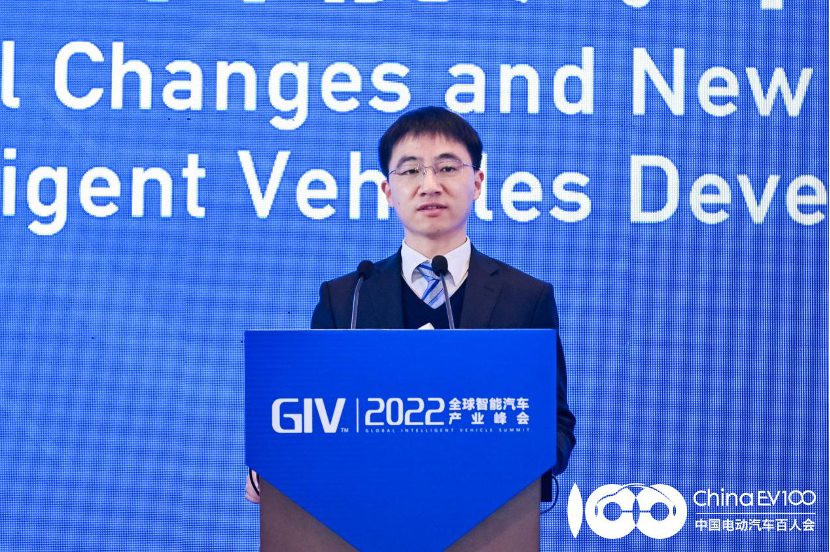
Wang Qisui, the General Manager of CATL China:
- CATL currently has a team of nearly 500 people dedicated to the research and development of materials. We have also built an experimental data platform based on materials science and established a battery design simulation platform, extending to the construction of a battery pack simulation platform.

Liu Weihong, Co-Founder and President of Black Sesame Technologies:
-
In 2019, we released the Huashan A500. We currently focus on the Huashan A1000 and A1000L, launched in 2020, with mainstream calculation power of 58 TOPS and 16 TOPS, respectively. A1000L is an autonomous driving chip developed based on a self-researched vehicle-level core IP in China, and it can realize the function of driving and parking in one chip. In addition, next year we will launch the Huashan A2000, which has a calculation power exceeding 250 TOPS and uses a 7-nanometer process.
-
Black Sesame has a team of over 1,000 people and we have established our own full-stack algorithm ability. We provide all algorithms for full vision, surround vision, and testing. We have also done some exploration in the cockpit and solved some algorithmic needs of traditional DMS and OMS in the cockpit.
-
In May of this year, we signed a comprehensive strategic cooperation agreement with Jianghuai Automobile Group, led by Li Ming. We will launch the Huashan A1000 chip. Two days ago, we also announced our appointment for S59 and S73, two important projects under Dongfeng Passenger Car Company, and received strategic investment from Dongfeng Group.

Wang Jun, COO of Huawei Intelligent Automotive Solutions BU and President of Intelligent Driving Solution Product Line:- In late October of this year, we have released 1.72 million component sets. On September 28, 2022, the SDV working group of China Association of Automobile Manufacturers released the “Software Defined Vehicle Service API Reference Specification” 3.0 official version, which includes 501 API interfaces for atomic services and 343 API interfaces for device abstraction. As an important member of the SDV working group, Huawei has completed system domain integration with more than 20 manufacturers and more than 30 equipment models based on standardized interface specifications, which has improved the development efficiency of new business tenfold.
-
In September, Shenzhen officially released high-precision maps and launched the city NCA self-driving navigation assistance function towards Shenzhen car owners based on Huawei ADS system equipped on ARCFOX Alpha S HI edition. Huawei ADS is the first system that supports advanced driver assistance in urban areas.
-
Our intelligent driving computing platform MDC’s core is the Ascend series. Based on Ascend computing, we have built the Octopus cloud training platform, created an end-to-end intelligent driving development, training, and deployment platform with collaboration between the end and the cloud, rooted in technology, and given the world a second choice. We have migrated all intelligent driving training to the Ascend architecture, which means that many operators of our own training have been built on the Ascend and open to other algorithm developers. We hope everyone can use this system together and crowdfund the operator library to continue developing on the black earth of China and make it better. We will continue to work closely with colleges and universities and educational institutions to provide training on the Ascend system for developers and provide tools and technical support in the process of migrating to Ascend, working with industry partners in China to build an independent intelligent driving technology system and share technological innovation achievements and win the future of intelligent driving together.

Zhong Xiangping, Vice President of Tencent Group and President of Tencent Smart Transport and Travel:
-
This year marks the fifth year of Tencent’s entry into the automotive field. Currently, we have cooperated with over 100 automobile companies and travel technology companies, and over 150 models with the implementation of Tencent Intelligent Cabin Solution TAI and have reached over 8 million vehicles.
-
In-vehicle services will be closely integrated with location and services based on driving and riding scenes. To address the problem of data mismatching between various maps, automatic driving maps and manual navigation maps, Tencent provides the “smart driving map” which can achieve the integration of SD, lane-level, and HD map data, and switch naturally and seamlessly according to different driving modes and scene demands.

Meng Pu, Chairman of Qualcomm China:
-
As of September 2022, the total estimated value of orders for Qualcomm’s whole car automotive business has reached 30 billion US dollars.
-
According to IDC predictions, by 2025, the adoption rate of intelligent connected systems in the automotive industry in China is expected to reach 83%, with shipments increasing to 24.9 million units and a compound annual growth rate of 16.1%.
-
In August of this year, the Mocha DHT-PHEV LIDAR version was launched, becoming the first model in China to adopt the Snapdragon Ride platform. This car also features a Snapdragon digital chassis platform and an automotive intelligent interconnection platform.

Chu Ruisong, Vice President of Baidu Group and General Manager of Intelligent Vehicle Business Unit:
-
AVP is a fully-scenario autonomous parking product, with autonomous parking capabilities equalling those of a well-known new energy vehicle model. The second-generation AVP uses TDS and pure visual technology. It is already in mass production on models from Great Wall Motors, GAC, FAW and WM Motor, and has recently won a targeted spot in a leading global model.
-
ANP2 is a product that integrates driving and parking, supporting high-speed driving and autonomous parking. Technologically, it uses TDS and supports dual VH, with single VH support to come next year. It provides a safe, reliable and cost-effective driving experience that integrates driving and parking in a single domain control component and sensor plug-in using pure visual technology. It has already entered mass production on one model this year and has received positive media reviews, with a driving experience between Tesla and XPeng. More models will be launched in the first half of next year.
-
ANP3 is a high-end flagship product that can achieve the integration of city intelligent driving, high-speed intelligent driving, and autonomous parking through a single product. It is dedicated to becoming the leading intelligent driving product that is safe, easy to navigate, and user-friendly. Technologically, it is based on dual Orin and uses pure visual technology with optional LIDAR. ANP3 was launched in cooperation with Jidu Auto, a joint venture between Baidu and Geely. Other automakers have expressed interest and are in close contact with us. Several domestic chip companies have approached us in the field of domestic computing chips, and we are conducting assessments and preliminary research.- Xiaodu Car OS provides a complete package solution for in-cabin intelligence for car manufacturers, which includes the AI capabilities of Baidu’s Intelligent Cabin. As of now, Xiaodu Car OS has been mass-produced on over 400 million cars, and has been adopted by 25 car brands and more than 160 car models.

-
Currently, China’s share in the global intelligent automobile market has reached 57%. With the penetration rate of China’s intelligent automobile market reaching 26%, Momenta predicts that by 2025, China’s high-level driving assistance system adoption rate will exceed 70%.
-
Based on the advantage of mass-produced cars, Momenta users have driven nearly 24 million kilometers with advanced driving assistance systems, and more than 120,000 deliveries have been made using End-to-End autonomous logistics technologies.
-
We have constructed the first Chinese autonomous driving data intelligence system, MANA, which has completed a complete data feedback loop. The learning duration of MANA exceeds 400,000 hours.
-
In the 1.0 era, we mainly relied on LIDAR, which had high costs and less mileage, of around 100,000 kilometers. In 2.0 era, AI applications on cars were still on a small scale and with small data, and the mileage of autonomous driving exceeded ten million kilometers. In the data-driven 3.0 era, everything we do is to acquire data more efficiently and turn it into knowledge.
-
In the first step of data acquisition, a large amount of data is needed to be used for training. In addition to large-scale real data, synthetic data with different lighting conditions and backgrounds is also introduced through data augmentation, to make up for the shortage of samples. Using mixed transfer training, the difference in the probability distribution of core data and real data in the feature space is reduced, making the distribution of the two more close. Secondly, a dual-perception model for red-and-green signal light detection and road binding design is proposed. The red-and-green signal light is detected first to output color, shape, and orientation, and then, the probability map of the signal light location is obtained through a convolutional neural network. The spatial attention mechanism is used to combine these two outputs, and then it is inputted into the traffic signal control’s binding communication module. Based on this method, we have conducted a large number of tests, and it can accurately recognize traffic lights in different cities, distances, turning scenarios and lighting conditions.- Apart from traffic lights, another complex issue for urban road perception is lane recognition. In 2021, Momenta has fully introduced the Transformer method, leading the trend of technology. We designed BEV Transformer based on our business characteristics for lane recognition. Firstly, we extract features from the image, then perform BEV mapping, and compose a complete BEV space with multiple Cross Attention modules, along with temporal features to improve the efficiency.

- Many intelligent driving cars require high-precision positioning accuracy reaching 30 cm. The FindAUTO solution is a safe and reliable mass-produced high-precision positioning solution. For us, the primary concern is accuracy when it comes to positioning. Alongside high accuracy, FindAUTO solution also guarantees safety and reliability. It mainly includes two large segments: the cloud part of the FindAUTO Service and the terminal positioning algorithm of the FindAUTO Client.
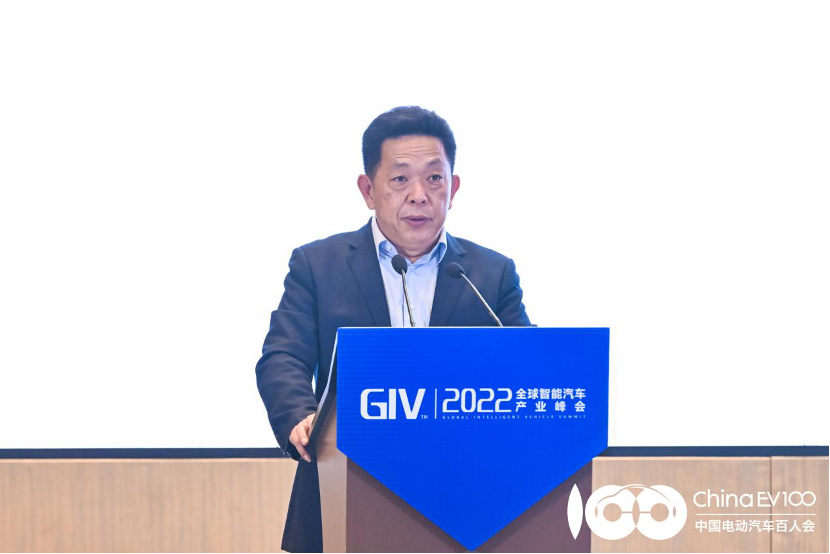
- We divide Chinese automakers into three categories. The first group is large traditional car enterprises, including SAIC, Dongfeng, and FAW. They are converting to adapting to completely electronic vehicles. The second group is new forces, like BYD, Geely, and Great Wall. These companies have flexible mechanism systems and strong competitiveness. The third group is newbies or new forces. But which of these categories has the most potential to become a world-class car enterprise? I think there is no definitive answer. It depends on which automaker can quickly transform and seize opportunities in this important era, then has a chance to enter the top ranks of the global automotive industry. I think this period won’t be too long, we might see the entrance of a first-class world-level car enterprise in 10 years.- There are opportunities including automotive-grade chips and electronic-electrical architecture. Although we are currently limited by some constraints, I believe these constraints are no longer a problem for China. It’s just a matter of time, as there are differences from the past, high-speed flow of information and people, and the support of the country. Currently, there is a formation of an innovative and entrepreneurial atmosphere in China, including the enthusiasm for innovation and entrepreneurship, as well as the rapid growth of our independent automotive companies after the electrification of the entire vehicle. We hope to further make breakthroughs in this area. I believe that good investment targets will be found and there will be excellent investment opportunities with tremendous growth potential in the future.

Zhu Yan, NIO Capital Managing Partner:
-
In 2021, in terms of proportion, private equity investment has accounted for about 23% of the industry, with an investment amount of 170 billion US dollars, which is a very high level.
-
Since around 2000, the VC and PE model has been introduced into China, and more successful models in the United States have been copied. At that time, investment was called “Copy to China”. Around 2010, there were some major changes in the industry. China’s own capital market continued to improve, and the RMB entered the game in a big way, basically equal to the US dollar. At the same time, many local business models and outstanding companies emerged, becoming very large-volume companies. Investors have also become more diversified. In addition to investors seeking financial returns, there are also some enterprises that have entered the LP group. When investing in funds, they hope to discover new technologies and even generate project sources for corporate mergers and acquisitions. Company targets will also have more comprehensive demands when raising funds.
This article is a translation by ChatGPT of a Chinese report from 42HOW. If you have any questions about it, please email bd@42how.com.
